 The past comes alive in vintage pop culture mag. 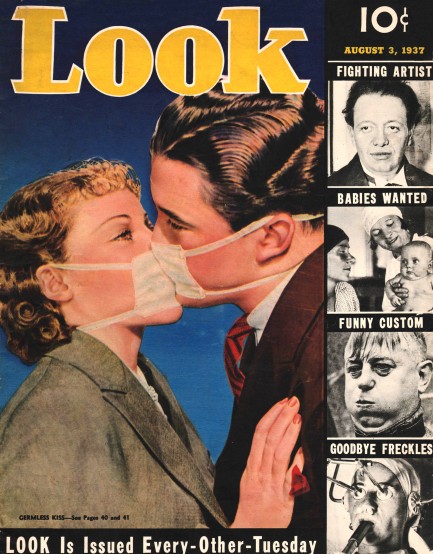
You have to admit—Pulp Intl. is one of the great time burning websites around. We're going to incinerate yet more of it today. Above is a cover from Look magazine, a chief competitor of the iconic Life. At the time this August 1937 issue appeared Look was headquartered far from the publishing hotbeds on the coasts, choosing to set up shop in Des Moines, Iowa. The editors claim 1.25 million in newsstands sales every issue. We don't know if that's true, but it was a high quality magazine, and this is a high quality example.
Inside you get Benito Mussolini, a ranking of Hollywood box office earning power, a special murder mystery for readers to solve, several pages of Gary Cooper, and a small photo feature on a German town that baptized every visitor, which is an interesting historical curiosity considering that in a devoutly religious country Hitler was successfully fanning the flames of hate against Jews. But “others” never seem to be included in any religion's definition of people deserving good treatment.
Elsewhere inside you get Mexican painter Diego Rivera with Frida Kahlo. Kahlo is referred to by Look editors merely as Rivera's third wife, “seeing to it that he is fed every few hours.” That may have been true, but today she's known throughout the world, recognized as an artist in her own right, which is a reminder that re-examining the past with an emphasis on those who were overlooked—a process some call “revisionism”—is a useful tool for getting things right. Numerous scans below.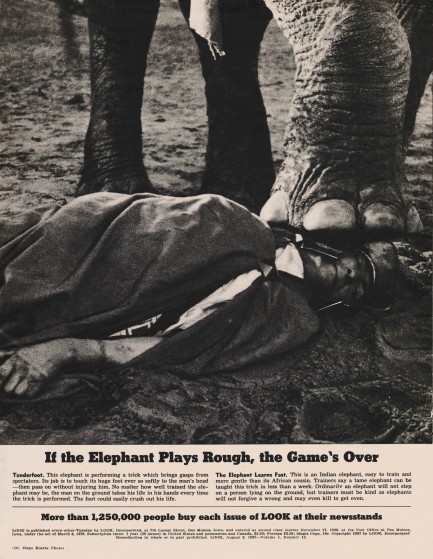 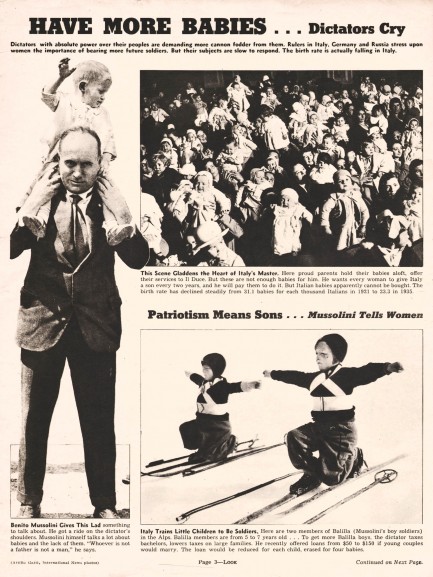  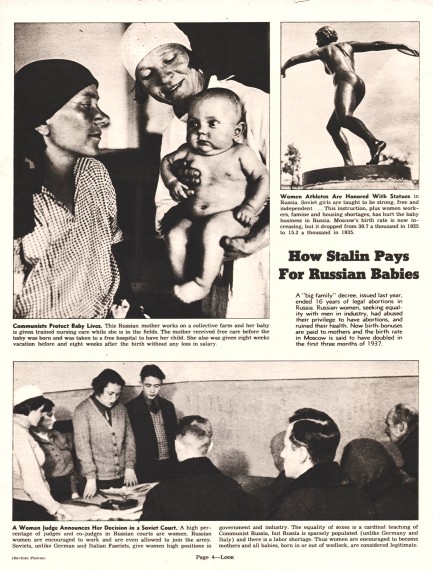 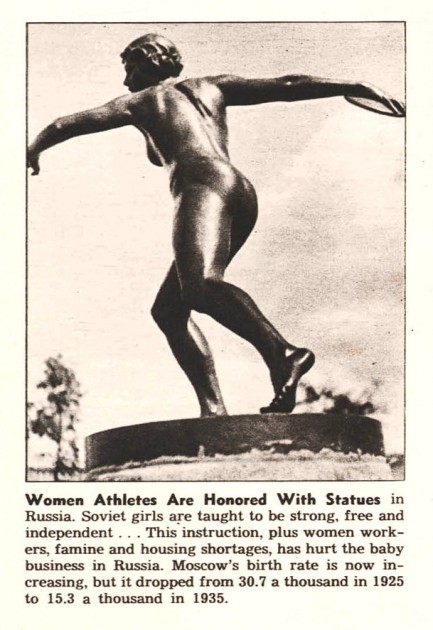 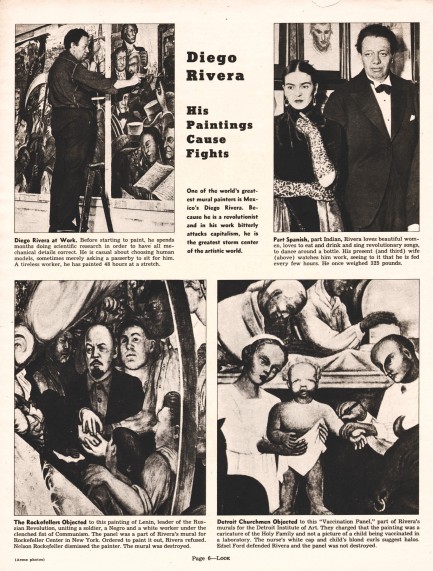 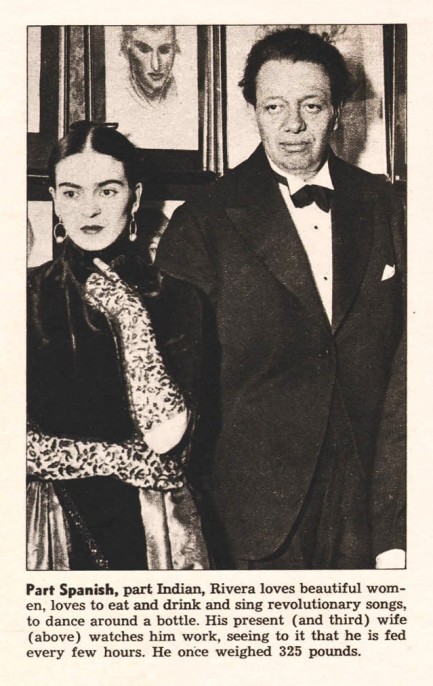 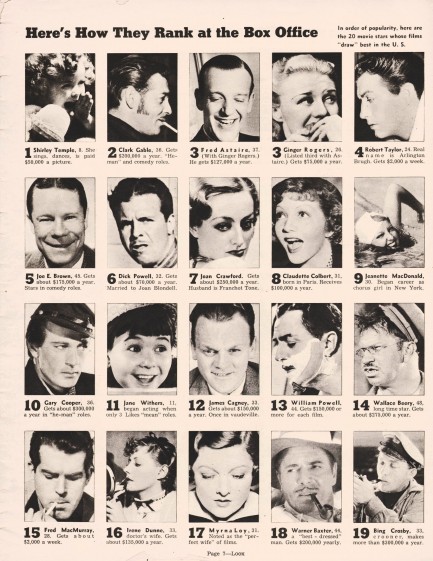 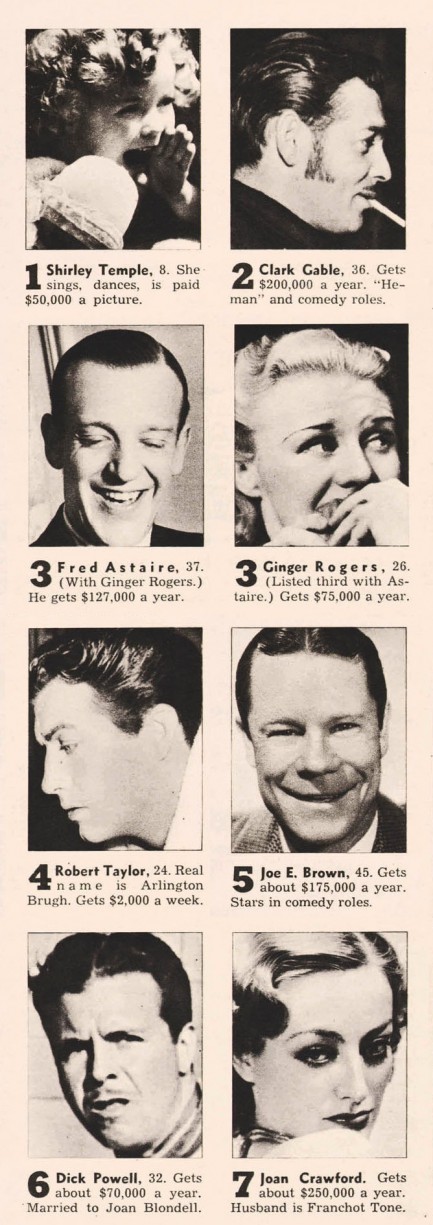 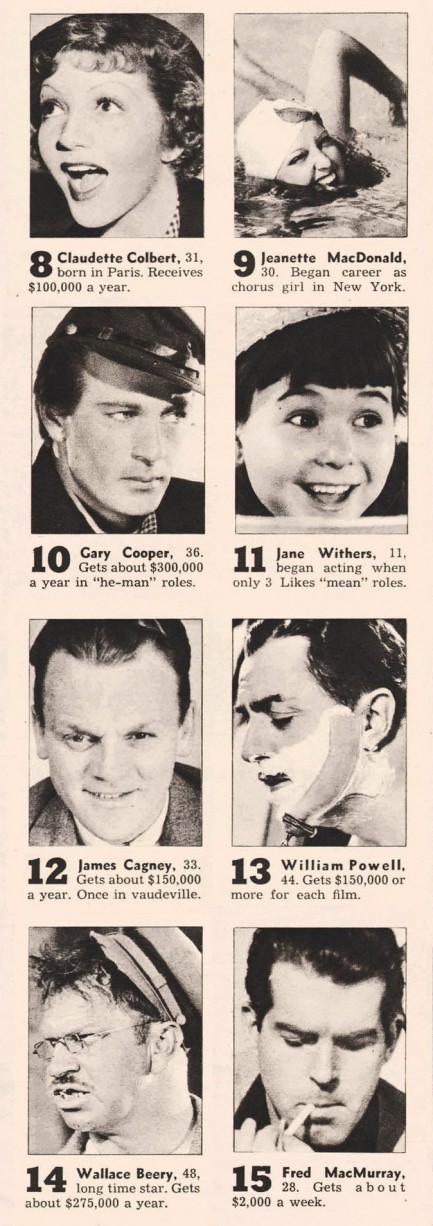 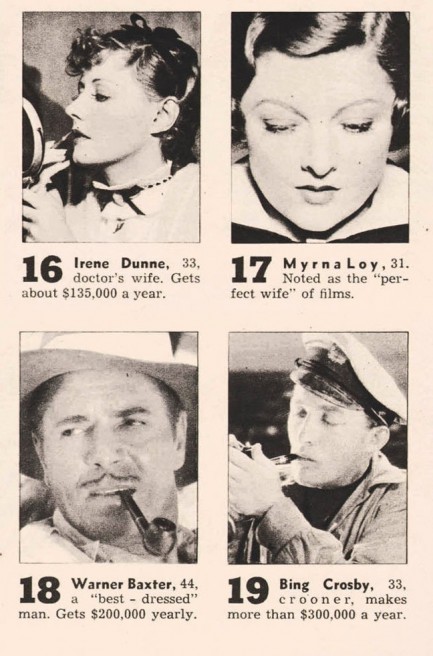 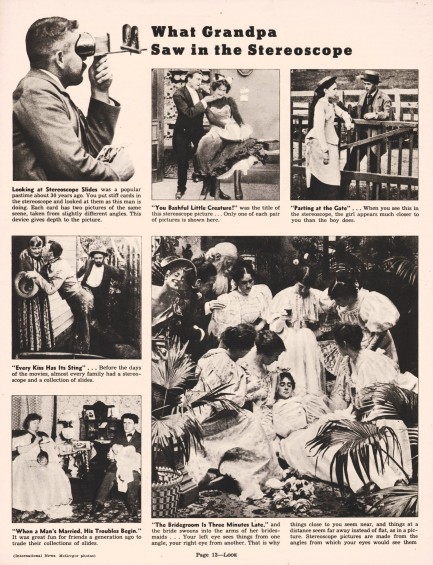 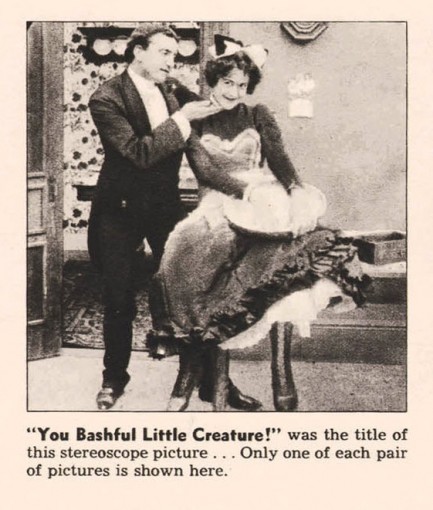 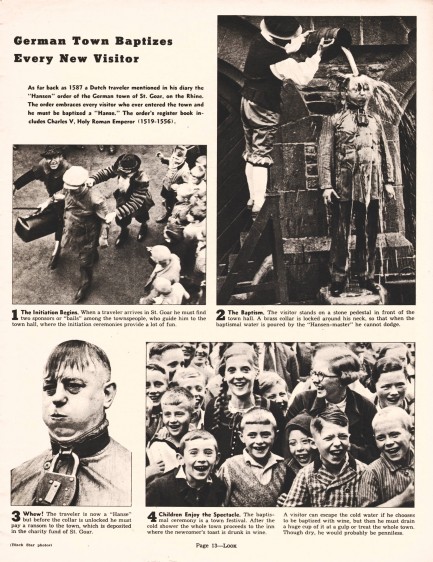 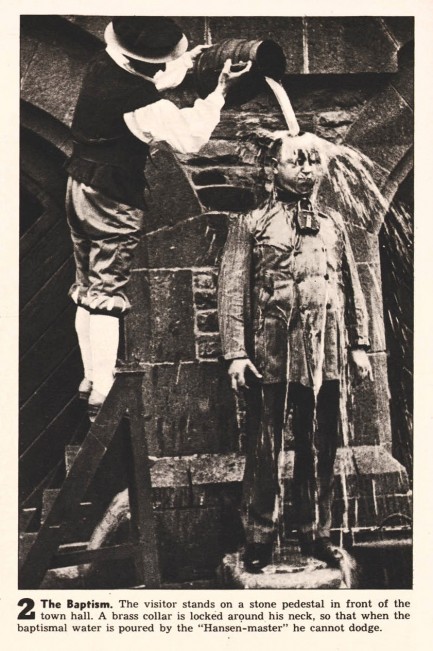 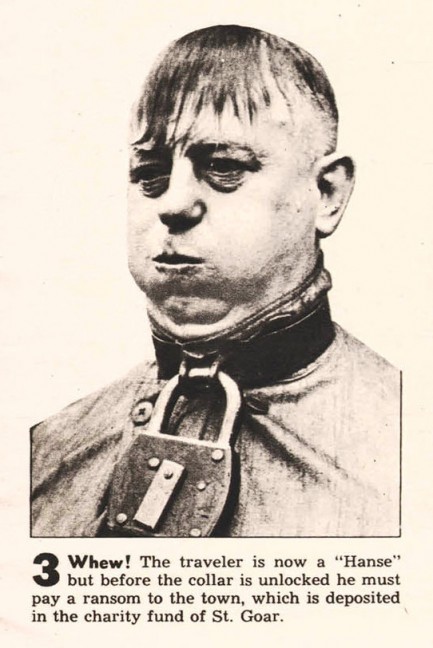 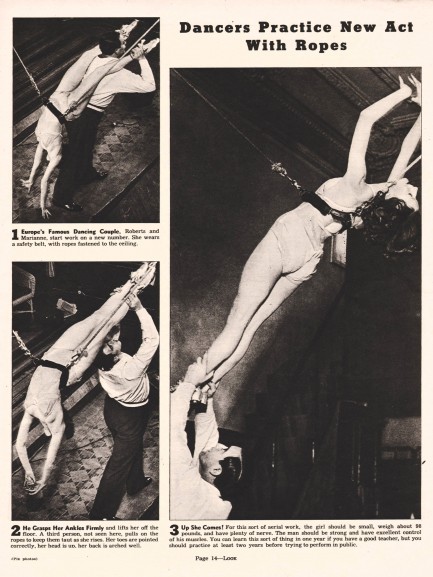  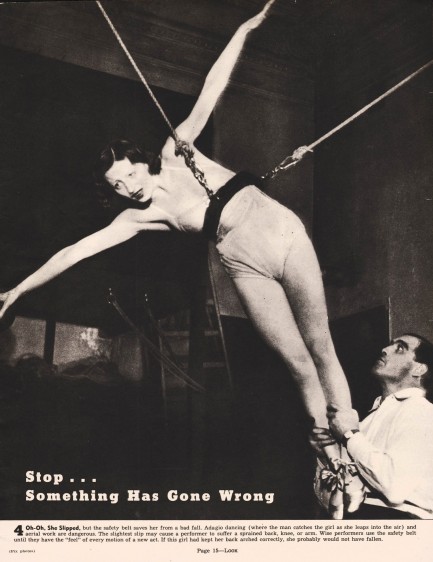 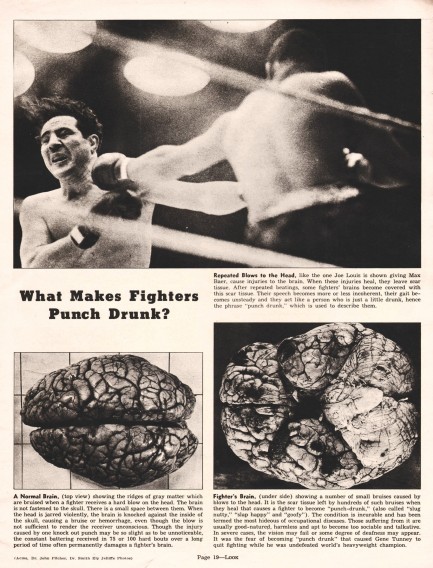 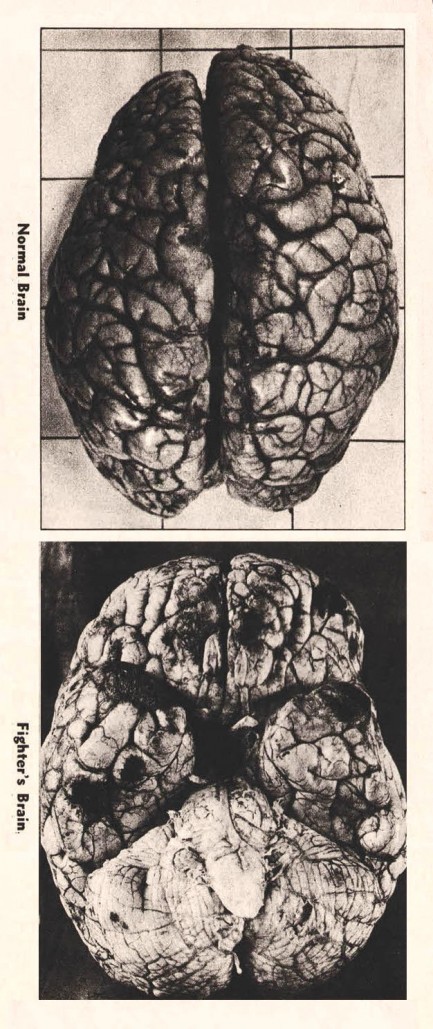 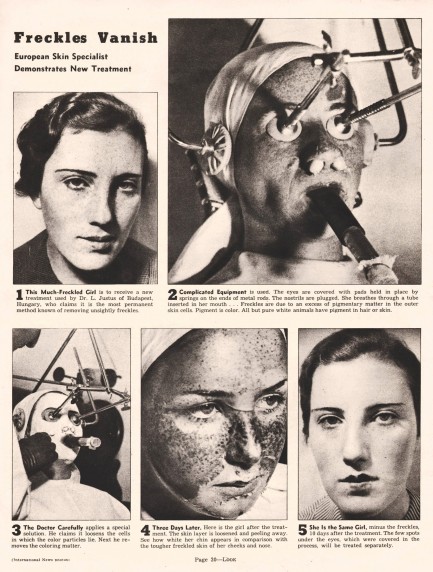 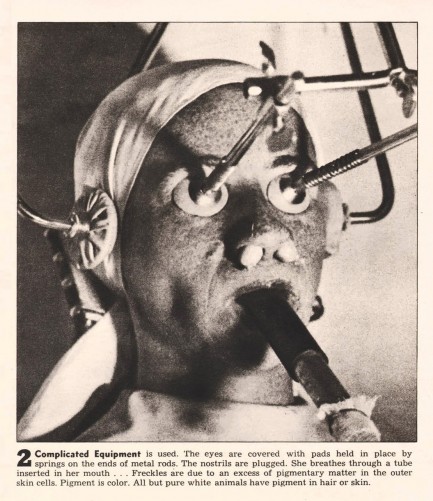  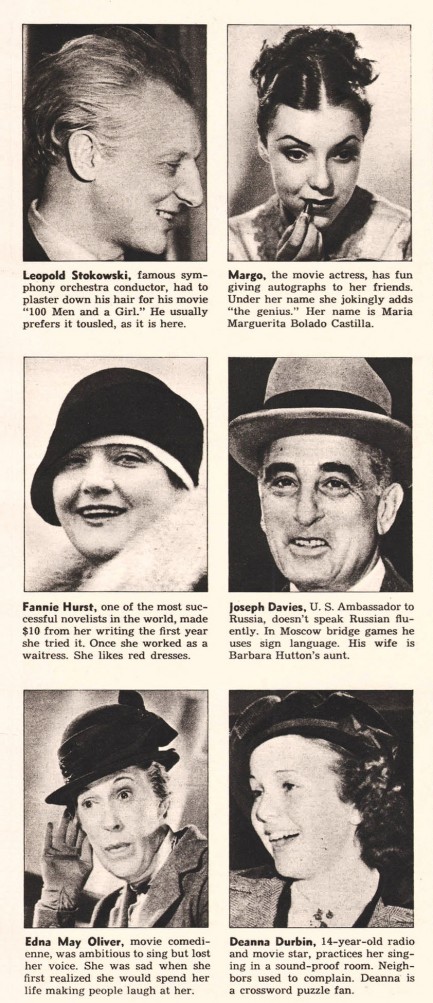 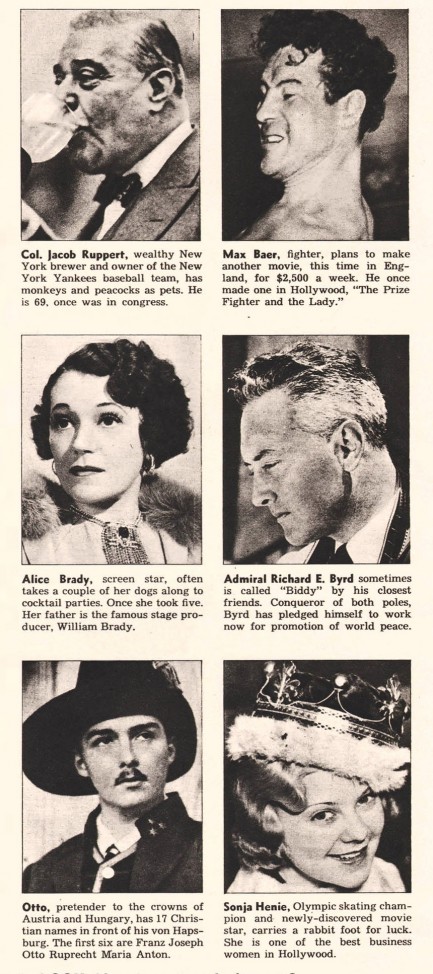 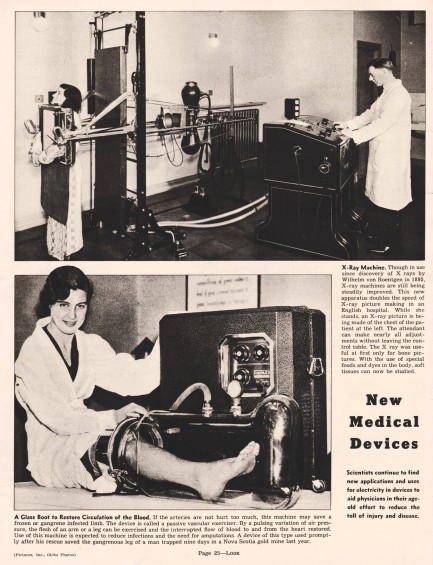 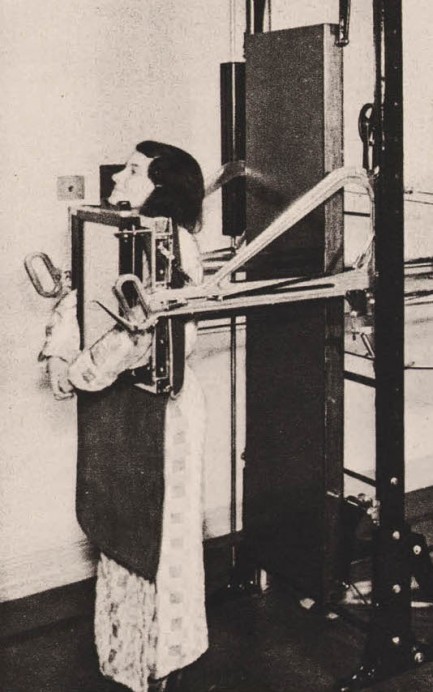 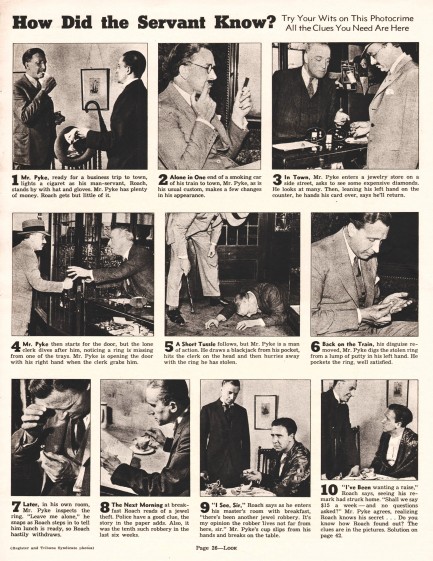    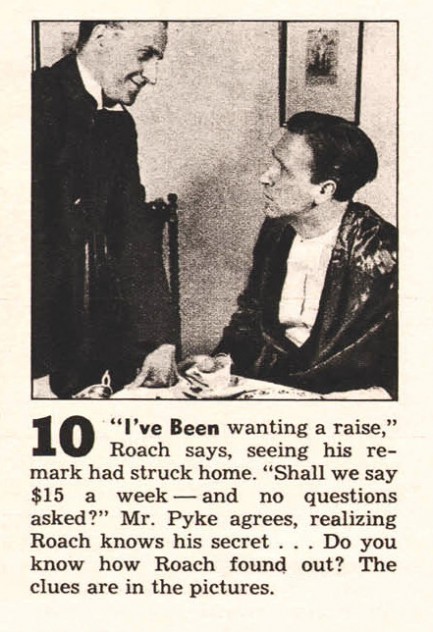 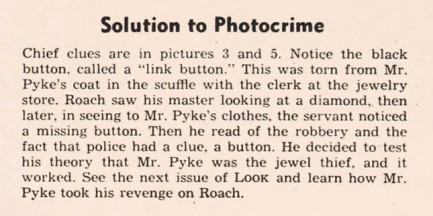 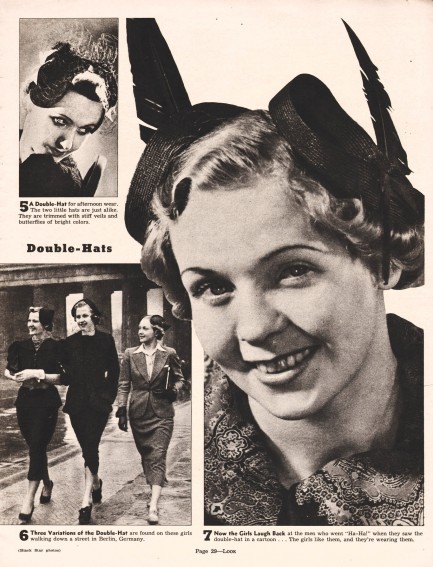 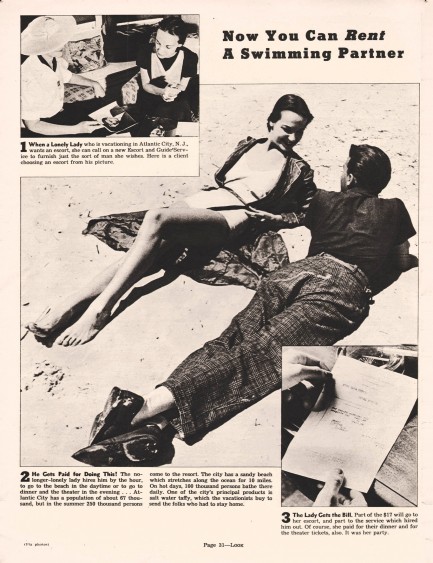 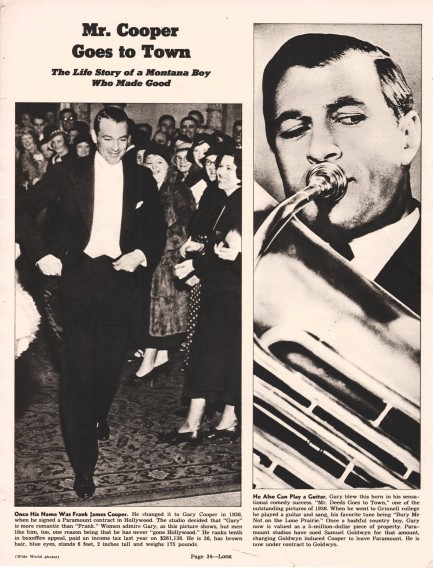 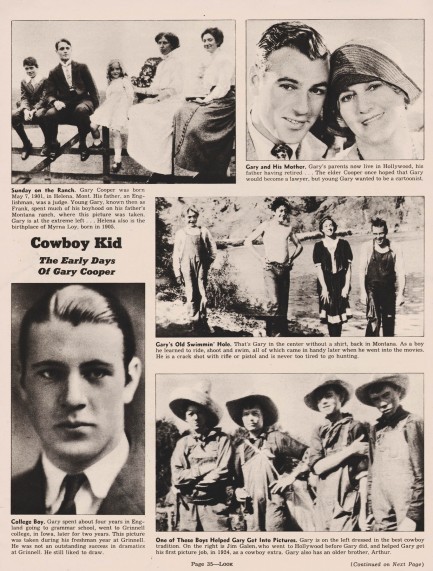 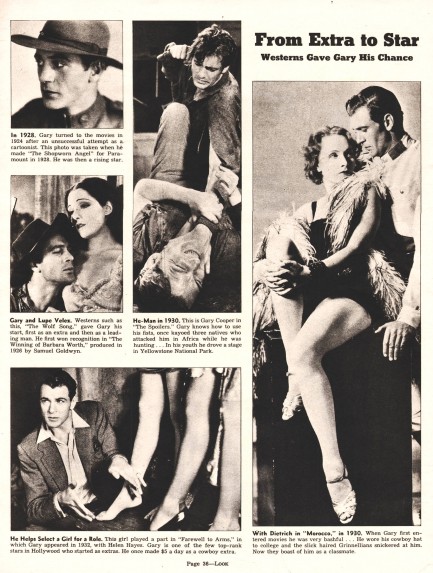 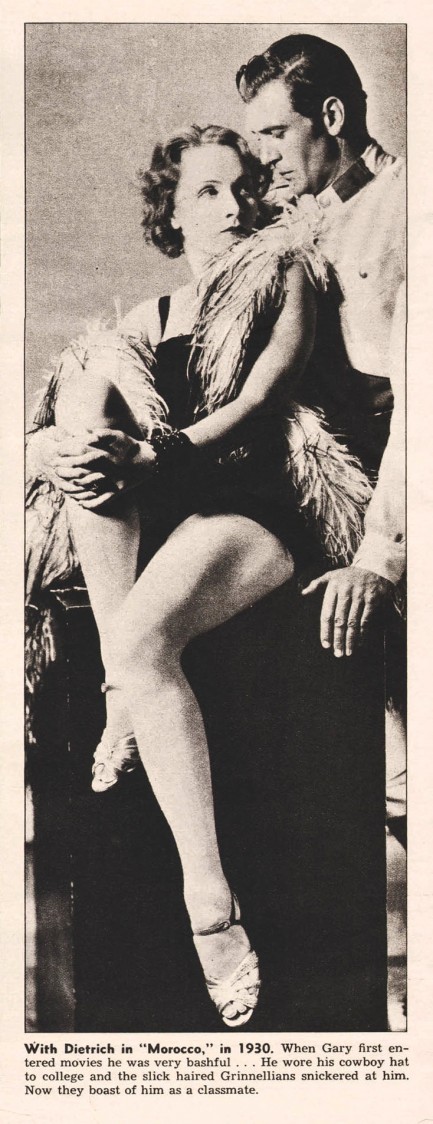 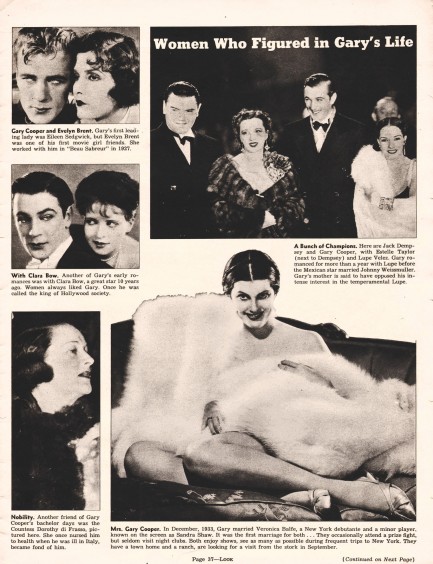 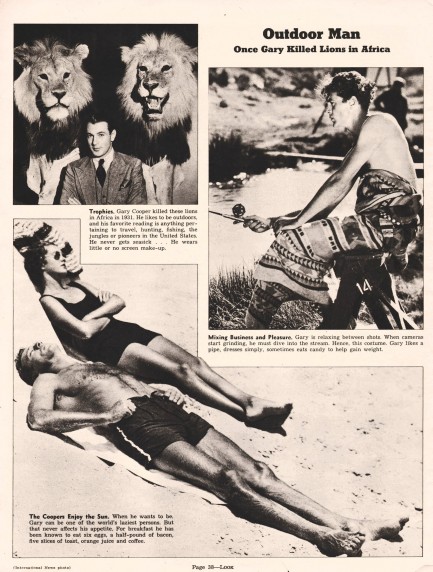 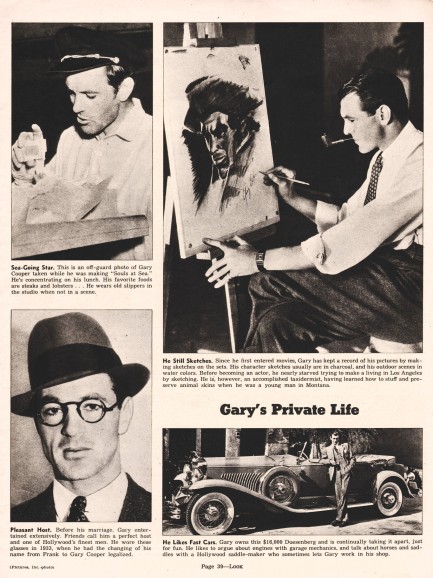 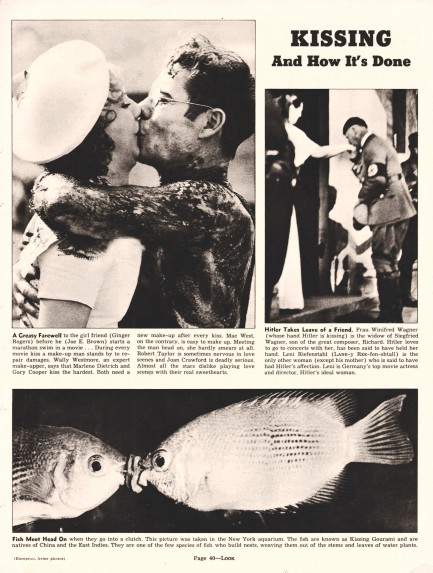 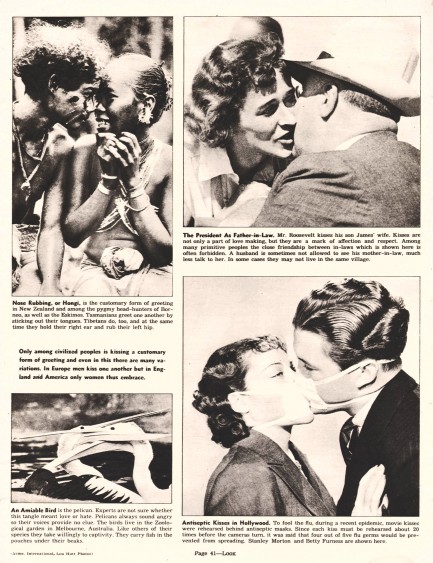 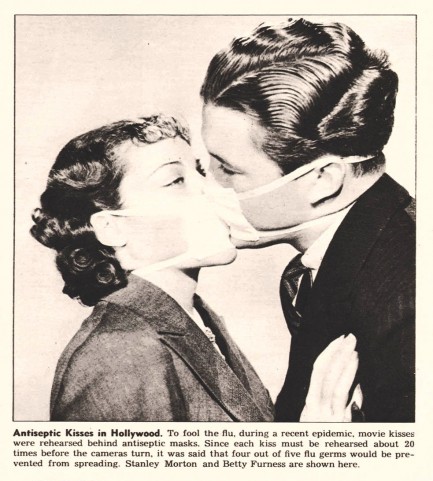 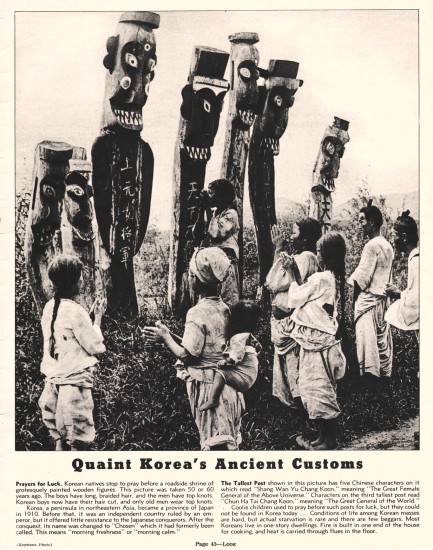 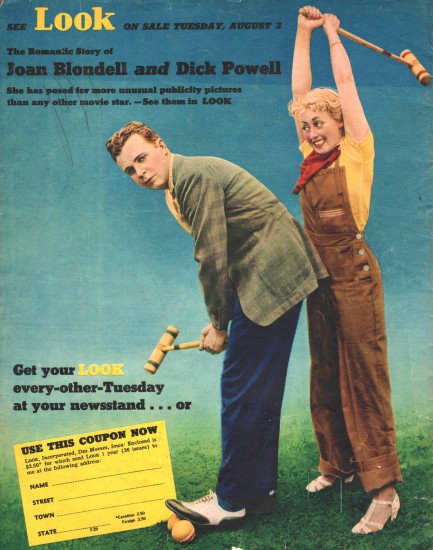
 Just the thing for a cross-country trip. 
This photo shows the crater made by the Sedan nuclear test, also known as the Storax Sedan test, which happened today in 1962 as part of Operation Storax. The crater is the result of an explosion that displaced twelve million tons of earth, and at 320 feet deep and 1280 feet in diameter is the largest man-made crater in the United States. It's also—bizarrely we think—listed on the National Register of Historic Places, especially weird when you consider that it sent two radioactive plumes wafting northeast from the Nevada explosion site, cross country from state to unsuspecting state, to settle especially heavily upon Iowa, Nebraska, South Dakota, and Illinois. Of all the nuclear tests conducted in the United States, Sedan ranked highest in overall activity of radionuclides in fallout, distributing nearly 7% of the total amount of radiation which fell on the U.S. population during all of the nuclear tests at the Nevada Test Site. Historic indeed. You see the explosion that caused all that below.
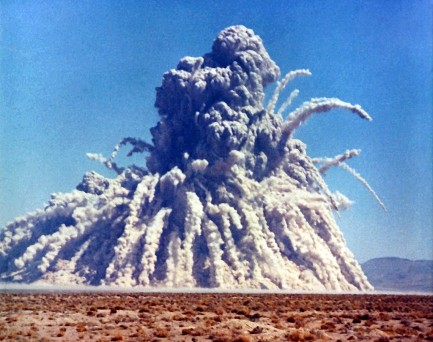
 Look who's all grown up. 
Above, a promotional photo of Iowa born actress Sue Lyon, who played Dolores Haze in the film version of Lolita. In Vladimir Nabokov's shocking but excellent book Haze was a pre-teen, but for Stanley Kubrick's 1962 adaptation the character was made into a teen. Lyon was fourteen at the time of shooting, but this nice shot was made when she was twenty-one in 1967. She went on to good parts in Night of the Iguana and Tony Rome, but managed only about a dozen cinematic roles before leaving movies behind for good in 1980.
 So, let me show you what I meant when I said I wanted us all to come early tonight. 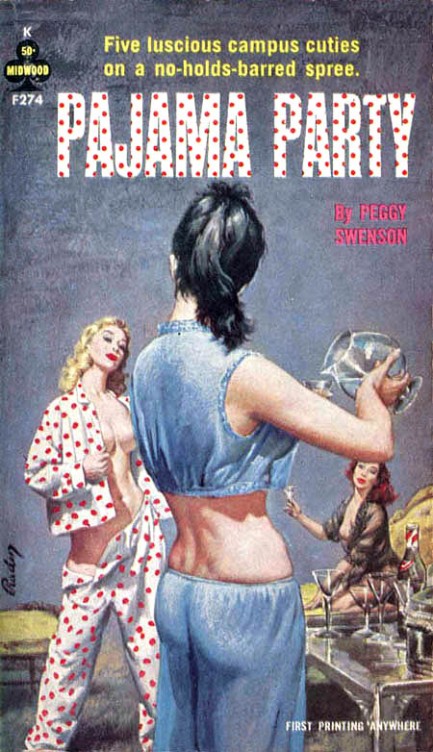
Above is a cover for 1963’s Pajama Party, a book written by Peggy Swenson, who was in reality Richard E. Geis. Interesting fellow, Geis—he specialized in beatnik and counterculture sleaze, churning out lightweight novels like Bongo Bum, Beat Nymph, and Like Crazy, Man, and was indicted for obscenity over a novel called Three-Way Apartment. This was in 1964. Geis went to trial twice, first in California, then in federal court in Iowa. He was convicted but the case made its way to the U.S. Supreme Court where the panel overturned the verdict, thus making Geis’s Three-Way Apartment one of those forgotten but important books that helped free publishing from the grip of reactionary prudes. After Geis’s close call with the feds he must have felt artistically liberated, because his writing promptly went to the far ends, so to speak, of taste. Some titles: Anal Husbands and Deviant Wives, The Endless Orgy, Women and Bestiality, and, our two favorites—Orality ’69 and its sequel Orality ’70. Pajama Party was not so notable a book as those—five co-eds have a sleepover that involves a pillow fight, skinny-dipping, a striptease contest and a game of dares, before finally getting down to a little Sapphic lust—but we really like the Paul Rader cover, so there you go. On a different subject, we got a couple of reader pulp submissions with no art, which tells us our little uploader (located in the righthand sidebar, for those who don't know) is probably malfunctioning. This may have had something to do with the several hours of down time we had a couple of weeks ago that cost us several posts (since restored). But don't worry. The Black Bomber will have it working properly again in a jiff, because that's what he does, at which point we'll let you know and hopefully get resubmissions of those reader offerings. Thanks as always for your patience.
|
 |

The headlines that mattered yesteryear.
2003—Hope Dies
Film legend Bob Hope dies of pneumonia two months after celebrating his 100th birthday. 1945—Churchill Given the Sack
In spite of admiring Winston Churchill as a great wartime leader, Britons elect
Clement Attlee the nation's new prime minister in a sweeping victory for the Labour Party over the Conservatives. 1952—Evita Peron Dies
Eva Duarte de Peron, aka Evita, wife of the president of the Argentine Republic, dies from cancer at age 33. Evita had brought the working classes into a position of political power never witnessed before, but was hated by the nation's powerful military class. She is lain to rest in Milan, Italy in a secret grave under a nun's name, but is eventually returned to Argentina for reburial beside her husband in 1974. 1943—Mussolini Calls It Quits
Italian dictator Benito Mussolini steps down as head of the armed forces and the government. It soon becomes clear that Il Duce did not relinquish power voluntarily, but was forced to resign after former Fascist colleagues turned against him. He is later installed by Germany as leader of the Italian Social Republic in the north of the country, but is killed by partisans in 1945.
|

|
|

It's easy. We have an uploader that makes it a snap. Use it to submit your art, text, header, and subhead. Your post can be funny, serious, or anything in between, as long as it's vintage pulp. You'll get a byline and experience the fleeting pride of free authorship. We'll edit your post for typos, but the rest is up to you. Click here to give us your best shot.

|
|





























































































































